#Louis XVI fashion
Photo
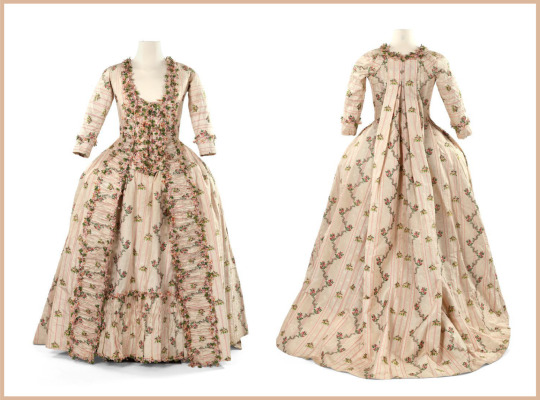

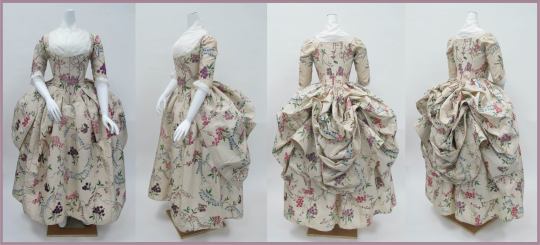

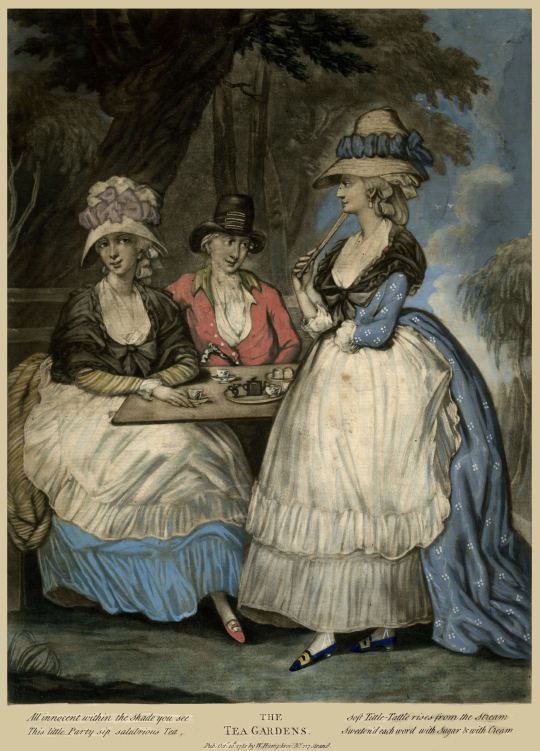




Some more 1780s big hair fashion -
Top left ca. 1780 Robe à la française (location ?). From fripperiesandfobs.tumblr.com-page/2 1548X1146.
Top right ca. 1780 Robe à l'anglaise (Museo de la Moda - Santiago, Chile). From 18thcenturylove.tumblr.com-tagged-robe+a+l'anglaise-page-2 1678X1250.
Second row ca. 1780 Four views of robe à la Polonaise (Metropolitan Museum of Art - New York City, New York, USA). From their Web site 2893X1315.
Third row ca. 1780 Robe à la Polonaise (Metropolitan Museum of Art - New York City, New York, USA). From their Web site 900X1200.
Fourth row 1781 The Tea Garden by ? (British Museum - London, UK). From their Web site 3968X5518.
Fifth row 1781 (probable exh' date) Adélaïde Genet, Madame Auguié (1758-1794), sister of Mme. Campan by Anne Vallayer-Coster (Sotheby's - 8Jul09 auction Lot 41). From their Web site; fixed spots w Pshop 3428X4290.
Sixth row 1781 Ernestine Fredérique, Princess de Croy by Élisabeth-Louise Vigée-Lebrun (Nationalmuseum - Stockholm, Sweden). From Wikimedia 1067X1349.
Seventh row 1783 Madame Charles Mitoire, née Christine-Geneviève Bron (1760-1842), avec ses enfants by Adélaïde Labille-Guiard (Getty Museum - Los Angeles, California, USA). From their Web site; fixed spots & edges w Pshop 2332X2965
Eighth row ca. 1785 Princesse de Lamballe by French school (location ?). From servimg.com-view-18669219-6356 812X973.
#1780s fashion#Louis XVI fashion#Georgian fashion#Rococo fashion#robe à la française#robe à l'anglaise#robe à la polonaise#hat#hat ribbons#apron#over-skirt#Adélaïde Genet#Anne Vallayer-Coster#Princess de Croy#Adélaïde Labille-Guiard#nursing dress#Élisabeth-Louise Vigée-Lebrun#princess de Lamballe#bouffant coiffure#fichu#zone bodice
56 notes
·
View notes
Text

Les Modes : revue mensuelle illustrée des arts décoratifs appliqués à la femme, no. 39, vol. 4, 1 mars 1904, Paris. COSTUME LOUIS XVI, PAR ROUFF. Photo Sazeruc. Bibliothèque nationale de France
PAGE 17. — COSTUME LOUIS XVI. — ROUFF. — Robe Louis XVI en brocatelle Pompadour pékinée de rayures roses, avec petit babil encadre d'un fichu de gaze et Malines se nouant devant sous un bouquet de roses retenu par un noeud laitonné de velours noir.
PAGE 17. — LOUIS XVI COSTUME. — ROUFF. — Louis XVI dress in Pompadour brocatelle pekin with pink stripes, with a small babble framed by a gauze kerchief and Malines tied in front under a bouquet of roses held by a brass-plated black velvet bow.
#Les Modes#20th century#1900s#1904#periodical#fashion#fashion plate#photograph#description#bibliothèque nationale de france#dress#costume#Louis XVI#Modèles de chez#Maison Rouff#one color plates
24 notes
·
View notes
Text
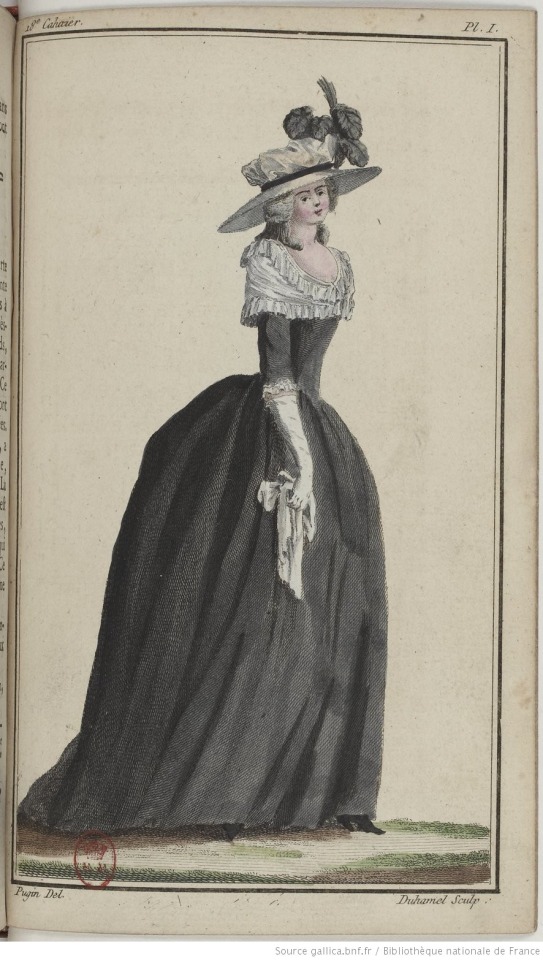
Fashion Plate, 1786, French.
From Cabinet des modes.
Portraying a woman in a black taffeta mourning dress.
BNF Gallica.
#womenswear#france#french#fashion plate#1780s#1780s fashion plate#dress#1780s dress#1786#cabinet des modes#bnf gallica#mourning dress#1780s mourning#mourning#reign: louis xvi
66 notes
·
View notes
Text
Marie Antoinette

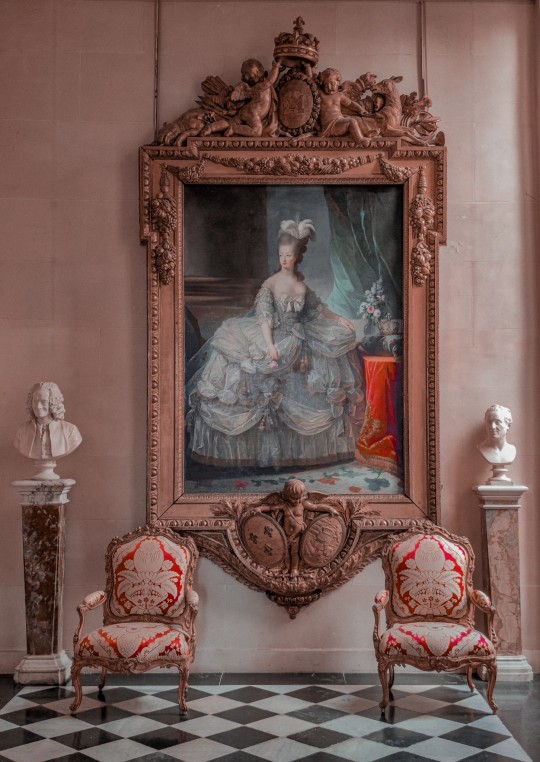

Élisabeth Vigée Le Brun (1778)
#aesthetic#france#travel#vacation#photography#vintage#marie antoinette#louis xvi#painting#portrait#rococo#fashion#18th century#art
5 notes
·
View notes
Note
I know I am late but HS shaving his head has to be the funniest but smartest thing he did look wise for a long time. If he plays his cards right and this is a big IF he will get a hair transplant and his hair will grow more healthy and curly (which is what his brand is all about) and he can get some fans interested again. Though if he’s delusional enough to think he looks good bald then it’s over for him especially if the moustache is still there 😭😭😭 Also how is Tay Russell still standing him when she is literally an it girl and can objectively do so much better
Harry’s looks are fading so fast that even his fans make memes of him online.
It’s always funny to see Harry Styles in public with a girlfriend because it’s obvious he loves his own image above any human being. I don’t think you can find any video of him where he isn’t obsessed with posing. That’s not a criticism, it’s just an objective fact.
The ladies who agree to be his girlfriends agree for one reason— to become more popular in the short term. No serious person will take this role. Good luck to Taylor; maybe she’ll come out of it happier than the rest, even if Harry releases a few songs sexualizing her.
#on a side note#is vogue magazine now just a diary for mega wealthy Americans#because it’s clearly not about fashion or culture anymore#it’s like a magazine that would have#championed Louis XVI prowess in bed at the time of the French Revolution#the article & photoshoot about Jeff Bezos#(name dropping Anna Wintour’s bestie Kim Kardashian)#was grotesque
1 note
·
View note
Text









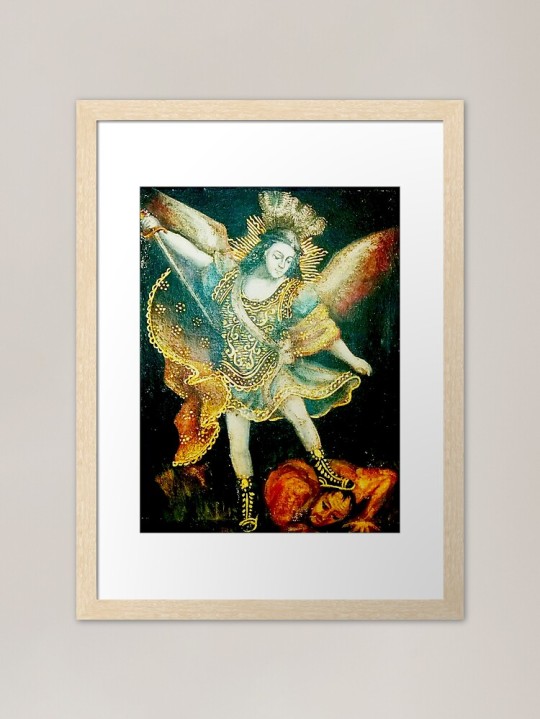
#fashion#decor ideas#pretty#bedroom#bedding#floral#flowers#homedesign#throw pillow#design#louis xv of france#louis xvi#vintage interior#homedecor#interiordesigner#homestyle#homeinterior#interiordesign#pink#pink aesthetic#pastel pink#paisley
0 notes
Text
Dumbest d'Eon theory is that Louis XVI forced her to live as a woman (for god knows what reason) and that she got back at him by acting like a man anyway. Because we all know that all women speak softly, are always polite, love fashion and makeup and don't do gross mannish things like drink, swear or have an attitude 🙄
#some dumbass: d'Eon wore a dress but had an attitude does this sound like a trans woman to you#like yes???#chevalière d'eon
32 notes
·
View notes
Text
History of the Corinthe from its Foundations, Part 2
A room on the ground-floor, where the bar was situated, one on the first floor containing a billiard-table, a wooden spiral staircase piercing the ceiling, wine on the tables, smoke on the walls, candles in broad daylight, this was the style of this cabaret. A staircase with a trap-door in the lower room led to the cellar. On the second floor were the lodgings of the Hucheloup family. They were reached by a staircase which was a ladder rather than a staircase, and had for their entrance only a private door in the large room on the first floor.
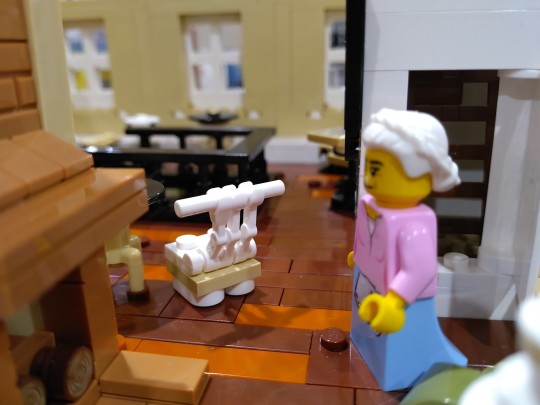
Under the roof, in two mansard attics, were the nests for the servants. The kitchen shared the ground-floor with the tap-room.
Father Hucheloup had, possibly, been born a chemist, but the fact is that he was a cook; people did not confine themselves to drinking alone in his wine-shop, they also ate there. Hucheloup had invented a capital thing which could be eaten nowhere but in his house, stuffed carps, which he called carpes au gras.

These were eaten by the light of a tallow candle or of a lamp of the time of Louis XVI., on tables to which were nailed waxed cloths in lieu of table-cloths. People came thither from a distance.

Hucheloup, one fine morning, had seen fit to notify passers-by of this "specialty"; he had dipped a brush in a pot of black paint, and as he was an orthographer on his own account, as well as a cook after his own fashion, he had improvised on his wall this remarkable inscription:
CARPES HO GRAS.
One winter, the rain-storms and the showers had taken a fancy
to obliterate the S which terminated the first words, and the G which began the third; this is what remained:
CARPE HO RAS.
Time and rain assisting, a humble gastronomical announcement had become a profound piece of advice.

[...] Corinthe was the meeting-place, if not the rallying-point, of Courfeyrac and his friends. It was Grantaire who had discovered Corinthe. He had entered it on account of the Carpe horas, and had returned thither on account of the Carpes au gras.
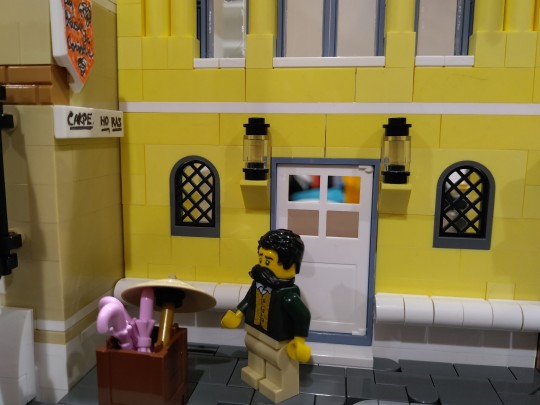
There they drank, there they ate, there they shouted; they did not pay much, they paid badly, they did not pay at all, but they were always welcome.

[...] About 1830, Father Hucheloup died. With him disappeared the secret of stuffed carps. His inconsolable widow continued to keep the wine-shop. But the cooking deteriorated, and became execrable; the wine, which had always been bad, became tearfully bad. Nevertheless, Courfeyrac and his friends con tinued to go to Corinthe--out of pity, as Bossuet said.

[...] The hall on the first floor, where "the restaurant" was situated, was a large and long apartment encumbered with stools, chairs, benches, and tables, and with a crippled, lame, old billiard-table. It was reached by a spiral staircase which terminated in the corner of the room at a square hole like the hatchway of a ship. This room, lighted by a single narrow window, and by a lamp that was always burning, had the air of a garret. All the four-footed furniture comported itself as though it had but three legs.

Two serving-maids, named Matelote and Gibelotte, and who had never been known by any other names, helped Mame Hucheloup to set on the tables the jugs of poor wine, and the various broths which were served to the hungry patrons in earthenware bowls. Matelote, large, plump, red-haired, and noisy, the favorite ex-sultana of the defunct Hucheloup, was homelier than any mythological monster, be it what it may; still, as it becomes the servant to always keep in the rear of the mistress, she was less homely than Mame Hucheloup. Gibelotte, tall, delicate, white with a lymphatic pallor, with circles round her eyes, and drooping lids, always languid and weary, afflicted with what may be called chronic lassitude, the first up in the house and the last in bed, waited on every one, even the other maid, silently and gently, smiling through her fatigue with a vague and sleepy smile.

Before entering the restaurant room, the visitor read on the door the following line written there in chalk by Courfeyrac: "Régale si tu peux et mange si tu l'oses.”
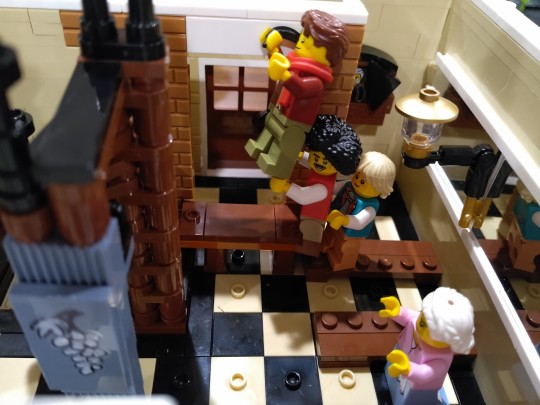
8 notes
·
View notes
Text
My Marie Antoinette Inspired Wishlist 🍰🏛🧴

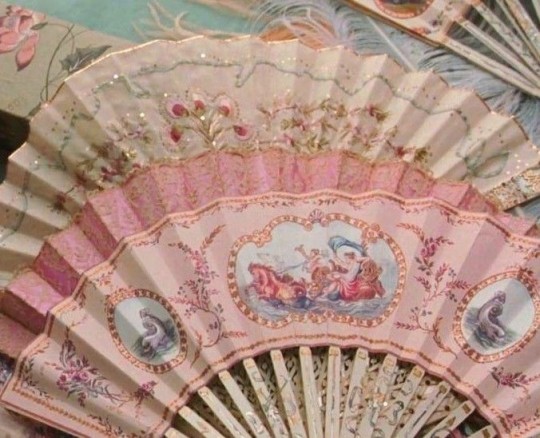

Beauty, Fashion and Bath Time
🍰 Anthropologie Retrofete Rosewood Choker
🍰 Anthropologie Chan Luu Crystal and Pearl Masquerade Choker
🍰 Evelyn and Crabtree Verbana and Lavender Hand Cream
🍰 Gisou Honey Infused Hair Oil
🍰 French Girl Rose Sea Soak
🍰 French Girl Rose Sea Polish
🍰 Fresh Rose Toner
🍰 Herbivore Botanical Pink Clay Soap
🍰 Hot Chocolate Femme Revolution Mid Heels
🍰 Hot Chocolate Marie Antoinette High Heels
🍰 Jurlique Rose Hand Cream
🍰 Jurlique Rosewater Balancing Mist
🍰 Ladurée Rose Petal Blush
🍰 L'Occitane Almond Delicious Hands
🍰 L'Occitane Almond Shower Oil
🍰 L'Occitane Shea Butter Delightful Rose Hand Cream
🍰 L'Occitane Shea Lavender Extra Gentle Soap
Mon Guerlain Eau De Parfum
🍰 Ouai Rose Hair and Body Oil
🍰 Panier Des Sens Rejuvenating Rose Soap
🍰 Pre De Provence Lavender Soap
🍰 Pre De Provence Honey Almond Soap
🍰 Rococo Pink Mule Heels
🍰 YSL Mon Paris Eau De Parfum
Food
🍰 Debauve and Gallais Thé Marie Antoinette
🍰 Billecart-Salmon Champagne Brut Rosé
🍰 Charbonnel et Walker Pink Marc De Champagne Truffles
🍰 Debauve and Gallais Marie Antoinette Chocolate Coins
🍰 Ghirardelli White Chocolate Crème Brûlée Duet Hearts
🍰 Godiva Chocolate Truffles
🍰 Jean-Paul Hévin Classical Chocolate Box
🍰 Ladurée Chocolate Squares
🍰 Ladurée Macarons
🍰 Ladurée Marie Antoinette Cake
🍰 Ladurée Marie Antoinette Tea
🍰 Ladurée Marie Antoinette Tea Delight Jam
🍰 Ladurée Pink Sugared Almonds
🍰 La Maison du Chocolat Dauphine Hatbox
🍰 Le Sirop De Monin: French Vanilla, Glasco Lemon, Lavender, Rose, Violet
🍰 Moët et Chandon Rosé Imperial Champagne
🍰 Nina's Paris Thé De Marie Antoinette
🍰 Pierre Marcolini Three-Drawer Chocolate Gift Box
Entertainment
🍰 The Affair of the Necklace (2001)
🍰 Eighteenth-Century French Fashion Plates in Full Color: 64 Engravings from the "Galerie des Modes," 1778-1787
🍰 Farewell, My Queen (2012)
🍰 Fashion Victims: Dress at the Court of Louis XVI and Marie Antoinette
🍰 The History and Haunting of the Palace of Versailles
🍰 Ladurée Macarons: The Recipes
🍰 Laduree: The Savory Recipes
🍰 Ladurée Sucré: The Sweet Recipes
🍰 Ladurée Tea Time: The Art of Taking Tea
🍰 Queen of Fashion: What Marie Antoinette Wore to the Revolution
🍰 Marie Antoinette: A Film by David Grubin
🍰 Marie Antoinette (1938)
🍰 Marie Antoinette (2006) on DVD
🍰 Marie Antoinette (2006) Film Book
🍰 Marie Antoinette (2006) Soundtrack Vinyl
🍰 Marie Antoinette - Hélène Delalex
🍰 Marie Antoinette: The Journey
🍰 Marie Antoinette: The Making of a French Queen
🍰 Memoirs of the Court of Marie Antoinette
🍰 Trianon and the Queen's Hamlet at Versailles: A Private Royal Retreat
🍰 Versailles: A Biography of a Palace
🍰 Versailles DVD Box Set
🍰 Versailles: The Great and Hidden Splendours of the Sun King's Palace
Home
🍰 Diptyque Orange Blossom Candle
🍰 Diptyque Orange Blossom Room Spray
🍰 Diptyque Roses Candle
🍰 Diptyque Roses Room Spray
🍰 Fragonard "The Swing" Print
🍰 French Tufted Bench Mauve Pink
🍰 Ladurée Cups and Saucers by Gien
🍰 Ladurée Teapot by Gien
🍰 Marie Antoinette Figure
🍰 "Marie Antoinette With a Rose" Print
🍰 Royal Albert Polka Rose Cake Stand Two-Tier
🍰 Royal Albert Rose Confetti Tea Cup and Saucer Set
🍰 Royal Albert 100 Years Three-Tier (Bouquet, Blush & Golden Rose) Cake Stand, 13.8"
#marie antoinette#wishlist#coquette#coquette aesthetic#rococo#princess life#princess aesthetic#princesscore#royalcore#elegantcore#that girl#that girl aesthetic#pink pilates girl#pink pilates princess#high maintenance#luxury#luxurious#luxury aesthetic#marie antoinette aesthetic#life aesthetic#dollette#doelette#classic academia#light acamedia#18th century#sofia coppola#prissy girl#dream girl journey#it girl#messy french girl
60 notes
·
View notes
Photo
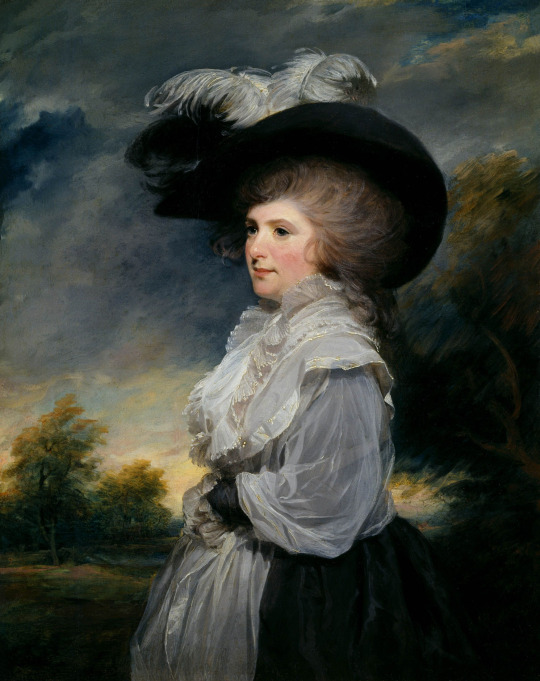
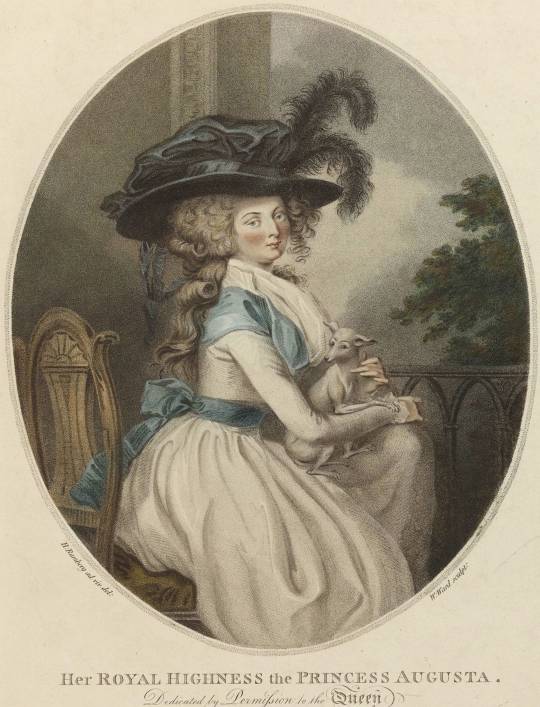
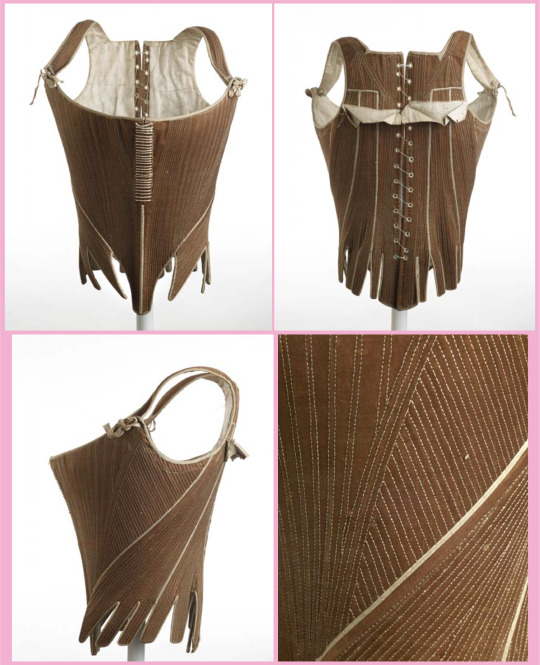
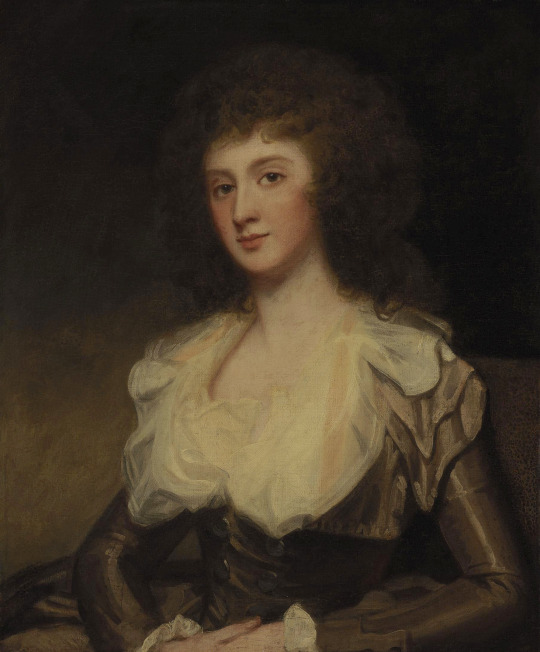
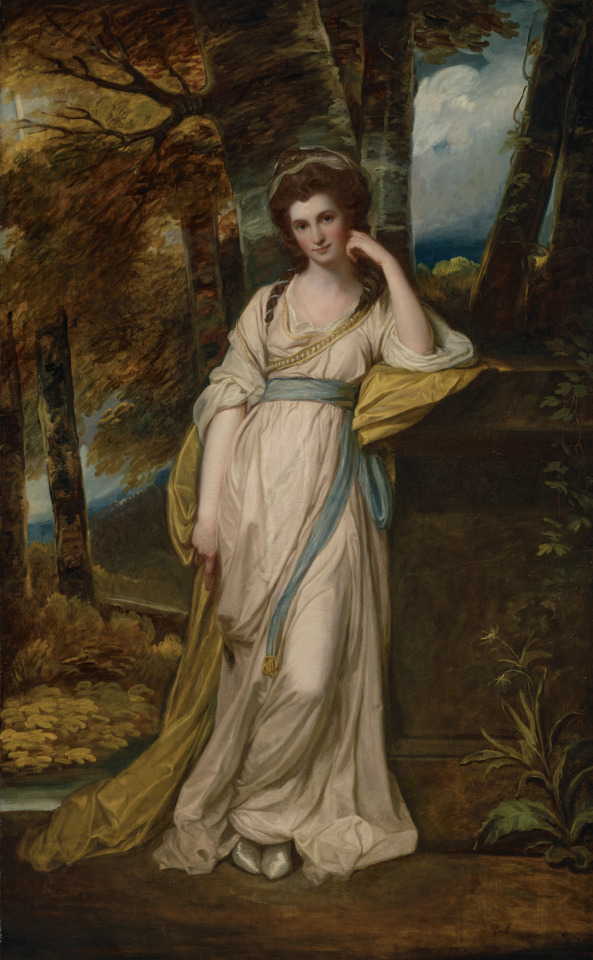
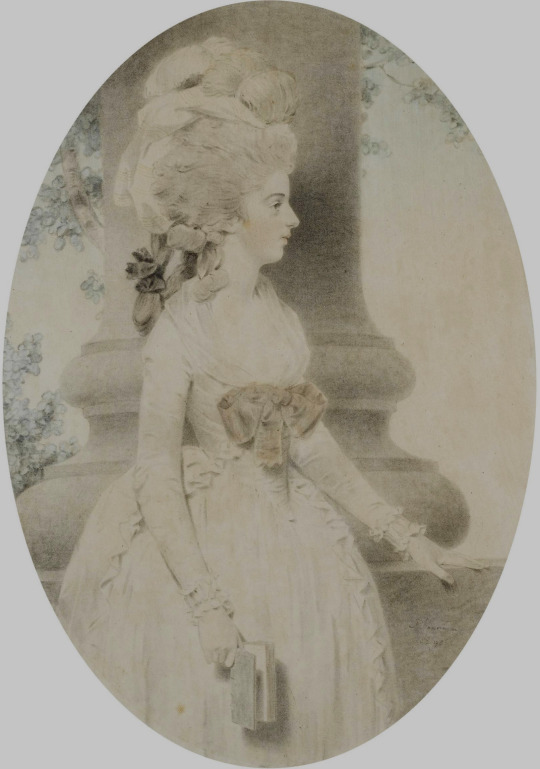
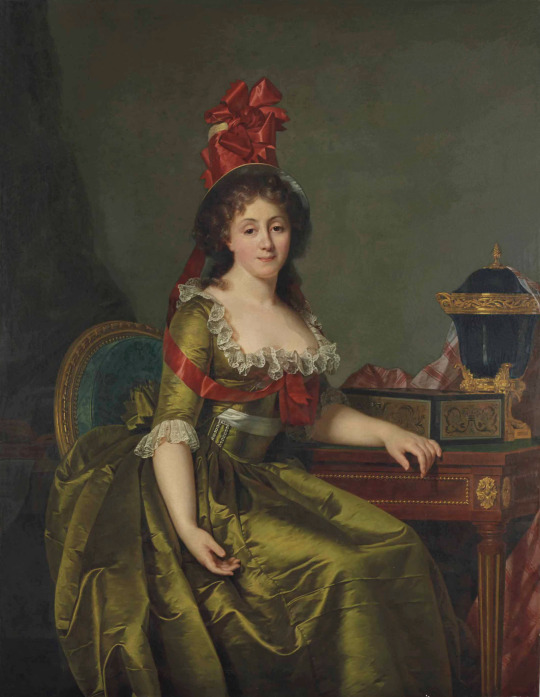
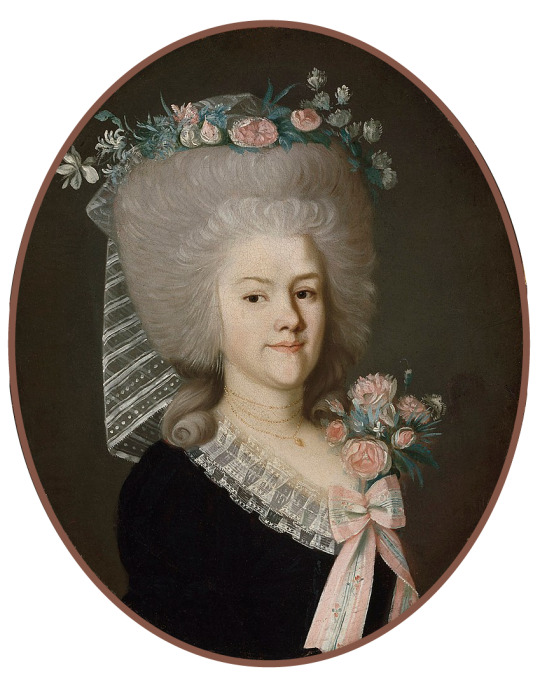
And more Big Hair (from top to bottom) -
ca. 1782-1787 Mary Constance by Sir William Beechey (Denver Art Museum - Denver, Colorado, USA). From Wikimedia; fixed spots & cracks w Pshop 2031X2560.
ca. 1788 HRH The Princess Augusta probably by William Ward after Johann Heinrich Ramberg. From pinterest.com/mama_stav/гравюры-цветные/ 7999X10466.
1780-1785 Corset of brown cotton twill with shoulder straps that tie at front with cotton (linen?) twill tape; holes down centre back for closure (Museum of London - London, UK). From their Web site 2894X3563.
Mrs. Mary Pemberton by George Romney (auctioned by Christie's). From their Web site; removed more obvious spots and cracks with Photoshop and filled in shadows 40% 1464X1767.
Mrs Deborah Jemima Maxwell (1755-1789) by George Romney (auctioned by Christie's). From their Web site 1478X2391.
1786 Miss Hodgson by John Downman (auctioned by Bonhams). From their Web site; decreased exposure and increased contrast 1629X2320.
Lady, seated, three-quarter-length, in a green satin dress and a bonnet with red ribbons by Rose-Adelaïde Ducreux (auctioned by Christie's). From their Web site; removed creases and cracks and fixed left and upper edges with Photoshop 1602X2069. This could be from the 90s.
1785-1787 Brita Elisabet Gyllenspetz by Nils Schillmark (Ateneum - Helsinki, Finland). From Wikimedia; removed flaws along top and spots throughout with Photoshop 849X1063.
#1780s fashion#Louis XVI fashion#Rococo fashion#Georgian fashion#William Beechey#picture hat#bouffant coiffure#full skirt#Princess Augusta#hat feathers#waist band#corset#Mary Pemberton#George Romney#fichu#lapels#Deborah Jemima Maxwell#close skirt#flowing skirt#shoes#Miss Hodgson#John Downman#zone bodice#bow#Rose-Adelaïde Ducreux#hat ribbons#square neckline#bertha#Nils Schillmark#floral headdress
36 notes
·
View notes
Photo

La Mode illustrée, no. 9, 1 mars 1896, Paris. Toilette de printemps. Modèle de chez Mme Brun-Cailleux, rue de la Victoire, 48. Ville de Paris / Bibliothèque Forney
Robe en soie à rayures roses et grises; la jupe à godets est garnie au bord inférieur de volants étroits en même soie. Le corsage-veste Louis XVI est fait à basques, avec de grands revers ondulés, recouverts en soie rose, encadrant un gilet en soie rose brodé de perles; l'ouverture du gilet est comblée par une chemisette en mousseline de soie plissée, ornée d'un jabot en dentelle. Le col Médicis très haut, découpé en dents, est recouvert en soie rose et broderie de perles; les manches, bouffantes au bord supérieur, sont garnies au bord inférieur avec de la dentelle et des boutons d'émail; le corsage est orné de boutons d'émail.
Pink and gray striped silk dress; the gored skirt is trimmed at the lower edge with narrow flounces of the same silk. The Louis XVI bodice-jacket is made with basques, with large wavy lapels, covered in pink silk, framing a pink silk waistcoat embroidered with pearls; the opening of the waistcoat is filled with a pleated silk muslin chemisette, adorned with a lace jabot. The very high, tooth-cut Medici collar is covered in pink silk and beadwork; the sleeves, puffy at the upper edge, are trimmed at the lower edge with lace and enamel buttons; the bodice is adorned with enamel buttons.
#La Mode illustrée#19th century#1890s#1896#periodical#fashion#fashion plate#cover#description#Forney#dress#spring#Louis XVI#waistcoat#jabot#collar#gigot#Modèles de chez#Madames Brun-Cailleux
101 notes
·
View notes
Text
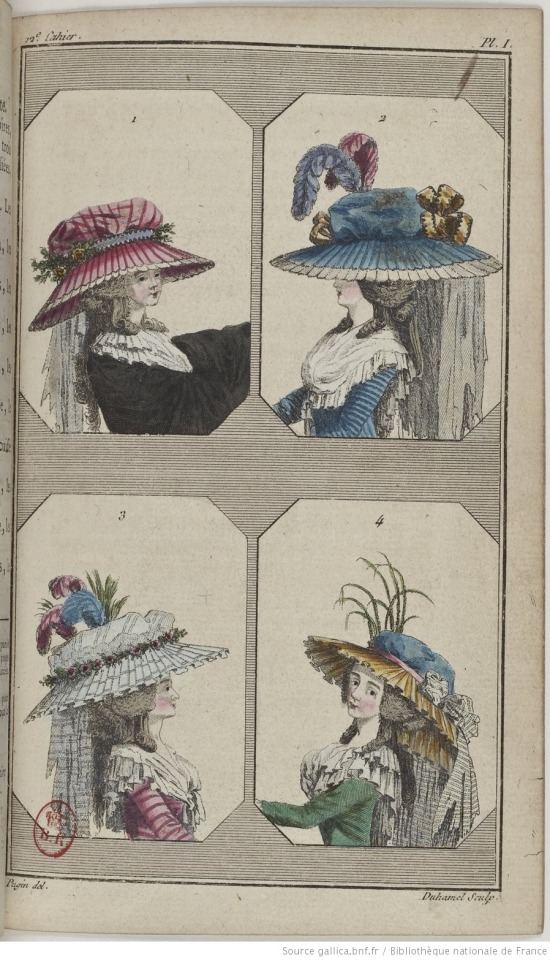
Fashion Plate, 1786, French.
From Cabinet des modes.
Portraying women’s hats and hairstyles.
BNF Gallica.
#fashion plate#1780s fashion plate#1786#1780s#1780s france#France#French#hat#hair#1780s hair#cabinet des modes#bnf gallica#reign: louis xvi#18th century
76 notes
·
View notes
Note
Hello😁 can you share your favorite queens?
Thank you for the great ask anon, of course! 🥰
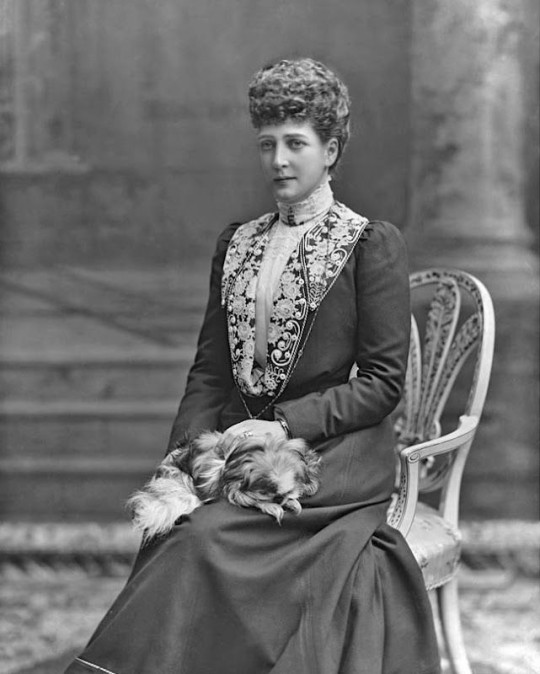
#1: Queen Alexandra of the United Kingdom – (nèe Princess Alexandra of Denmark, "Alix".
— She was beautiful, a warm and caring mother/grandmother, was popular as Princess of Wales and Queen Consort among of her people because of her good nature, and she supported many charities, including her own: "Alexandra Rose Day", founded by Queen Alexandra in 1912, this was a charity where flowers were being sold and all the money went to supporting Londoners in poverty. This was inspired by a priest in her native Denmark selling roses to raise money for those in need, Queen Alexandra brought the idea back to the United Kingdom. ❤✨

#2: Queen Anne Boleyn of England – (nèe Lady Anne Boleyn)
— She was intelligent, funny, caring and kind to all of people, and as her two years as Queen Consort she supported many charities, and even "gave alms to the poor, provided for widows, and even sewed shirts and smocks for the needy". She also helped with promoting new educational identities for monasteries, which were no longer under the protection of the Catholic Church. After only two years of being Queen Consort when she was said to have been 35 years old, she was executed after being imprisoned in the Tower of London for 17 days because she was accused of committing treason, but the true reason she was executed was because she failed to give King Henry VIII a male heir. ☹️💔

#3: Queen Marie Sophie of the Two Sicilies – (nèe Duchess Marie Sophie in Bavaria)
— She was beautiful, bright, and fierce. She was given the nickname the "Warrior Queen", the "Heroine of Gaeta" and the "modern Joan of Arc", rallying the troops, nursing the injured, feeding her forces at her own table and taunting Garibaldi's army from the battlements with the words; "Go ahead and shoot me. I will be where my men are". It was said of her that the Queen would "wipe your brow if you were wounded or hold you in her arms while you die". ❤️🔥👑
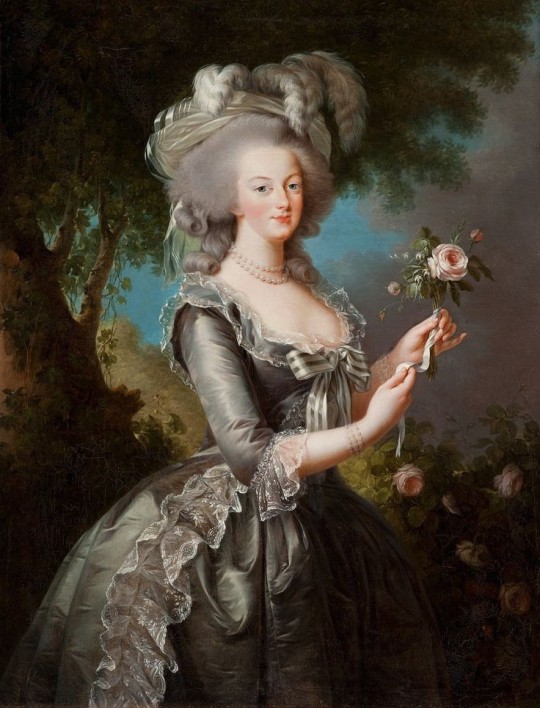
#4: Queen Marie Antoinette of France – (nèe Archduchess Marie Antoinette of Austria)
— She was honest, lovable, bold, a social butterfly who loved gambling, partying and extravagant fashions. Growing up she was closest with her sister, Maria Carolina, who was three years older, and with whom she had a lifelong close relationship. As Queen, Marie Antoinette was always unpopular, she spent lavishly, but her extravagance was only a minor cause of France's growing debt in the 1770-80s. Because of Louis XVI's indecisiveness, Marie played an increasingly prominent political role. But was very beloved for her charitable activities and patronage of the arts. She supported various charitable organizations and institutions, and she was also a benefactress of the poor. 💞🎀
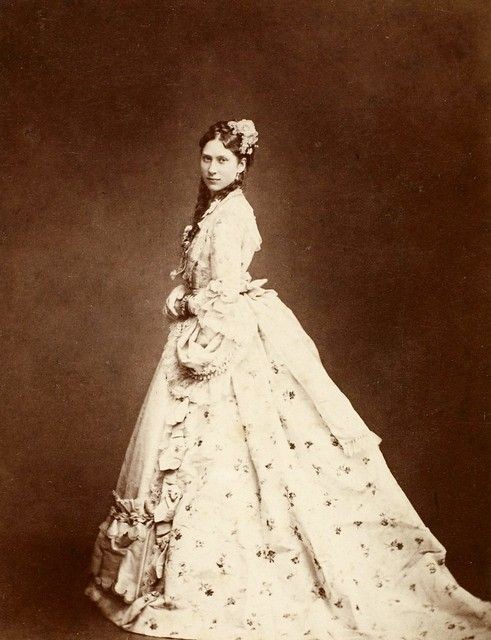
#5: Queen Lovisa of Denmark – (nèe Lovisa of Sweden)
— She was described as intelligent, with an ability to be natural, easy and friendly. And As Queen, she was mainly known for her many charity projects, an interest that she shared with her spouse. She did not care for ceremonial duties and public events, and lived a discreet life dedicated to her children and her interests in art, literature and charity. After a short tenure of only six years as Queen, she was widowed in 1912.
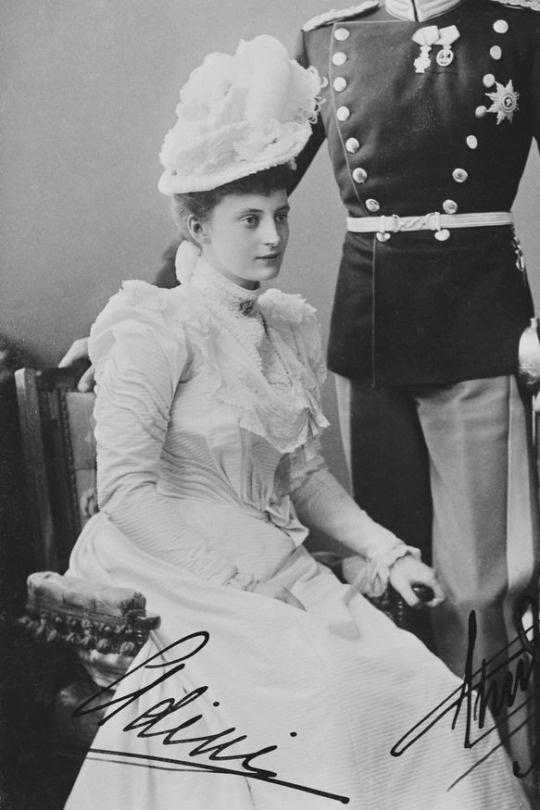
#6: Queen Alexandrine of Denmark – (nèe Alexandrine of Mecklenburg-Schwerin)
— She was reticent by nature. Her childhood was characterised by regular sporting activities, and from a young age she played the piano to a high standard. Her great interest in music stayed with her for her entire life and was passed on to her equally musical eldest son, Prince Frederik (IX). As of her first years as Queen, she had difficulty getting used to public attention, and she preferred to avoid the media limelight, but performed her functions in an exemplary manner. In the home her presence was crucial for the two boys, since Christian X was known for surrounding himself with a certain atmosphere of the barracks. Queen Alexandrine undertook extensive charity work until her death and was an avid golf player and photographer, who also loved doing needlework to a high standard. 💫
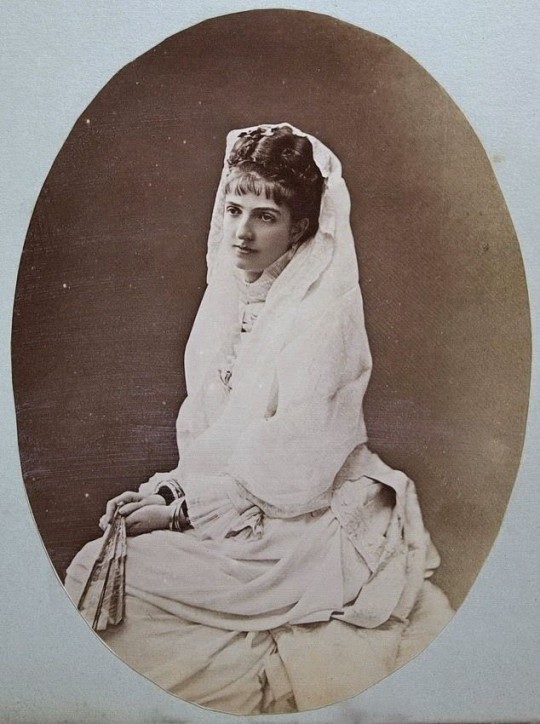
#7: Queen Margherita of Italy – (nèe Margherita of Savoy)
— She was described as sensitive, proud and with a strong force of will without being hard, as well as having the ability to be charming when she chose to. As to her appearance, she was described as a tall, stately blonde, but she was not regarded as a beauty. As Queen, she worked to protect the monarchy against republicans and socialists, and she gathered a circle of conservative intellectuals and artists known as the "Circolo della Regina" (Circle of the Queen) in her famous literary salon known as "Giovedì Della Regina" (Queen's Thursdays), where she benefited artists and writers.
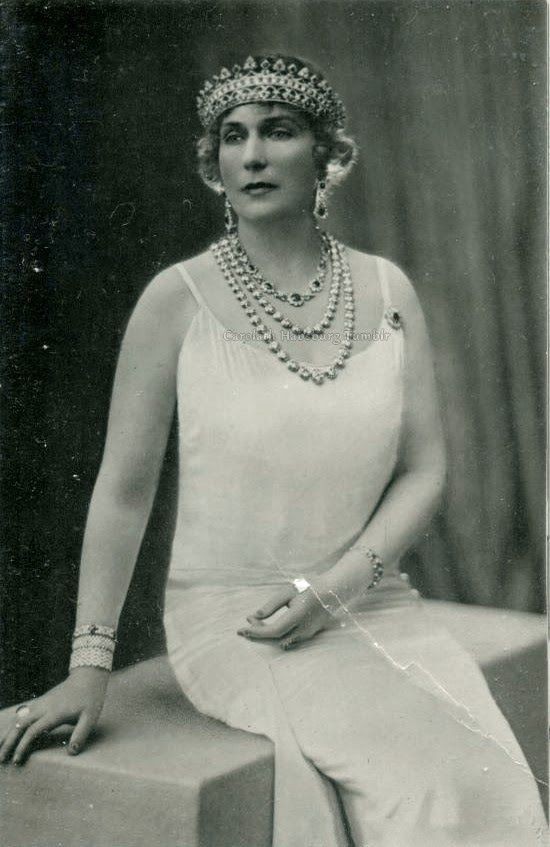
#8: Queen Victoria Eugenie of Spain – (nèe Princess Victoria Eugenie of Battenberg), "Ena".
— She was described as very kind but very strict and she devoted herself to work for hospitals and services for the poor, as well as to education. She also involved herself in the reorganization of the Spanish Red Cross. In 1929, the city of Barcelona erected a statue of her in a nurse's uniform in honour of her Red Cross work and since the the statue has been destroyed.

#9: Queen Elena of Italy – (nèe Elena of Montenegro)
— She was described as shy and reserved but also rather stubborn. Very attached to traditions, with a sensitive soul and a lively and curious mind, she was endowed with a strong love for nature: her favourite flower was the Cyclamen. She was a very tall woman of 180 cm (5'11). As Queen, her commitment to numerous charitable and welfare initiatives, which assured her great sympathy and popularity, was profuse. The Queen went well beyond mere charity: her evangelical spirit led her to practice every day the most genuine and most charitable love of neighbor.

#10: Queen Marie of Romania – (nèe Princess Marie of Edinburgh), "Missy".
— She was described as very beautiful and high spirited. As a young girl, Marie was very close with her sisters, but mostly her sister Victoria Melita, they played many games with their father and Marie's mother, the Duchess of Edinburgh neglected Marie and her sisters' education, considering them not very bright or gifted. But in the fields of painting and drawing, Marie and her sisters had inherited her grandmother, Queen Victoria's talent. On October 11th, 1914, Marie and her husband Ferdinand were acclaimed as king and Queen in the Chamber of Deputies. Princess Anne Marie Callimachi, a close friend of Marie, wrote that "as Crown Princess, she had been popular; as Queen, she was more loved". Marie maintained a certain influence on her husband and the entire court, leading historian A. L. Easterman to write that "it was not Ferdinand, but Marie who ruled in Romania".
#answered ask#queen alexandra#alexandra of denmark#anne boleyn#duchess marie sophie in bavaria#queen marie sophie of the two sicilies#marie antoinette#queen lovisa of denmark#lovisa of sweden#queen alexandrine of denmark#alexandrine of mecklenburg-schwerin#queen margherita of italy#margherita of savoy#queen victoria eugenie of spain#princess victoria eugenie of battenberg#queen elena of italy#elena of montenegro#queen marie of romania#princess marie of edinburgh#informational
13 notes
·
View notes
Note
sell me on ur time princess game. if you can sell me i will use whatever that code thing is if you give it to me
Alright boss hear me out.
Dress Up Time Princess is a game. But! It's a game with a story with choices, otome elements and, most importantly, the ability to dress your main bitch up in BOMB clothes. Your main girl as you play as is a so-called traveler I honestly forgot the lore because I originally installed this last year, but the short of it is that you have this magic lantern which can transport you into various worlds as some sort of main character, and there you🫵 have to make your choices.
We have a world where you are put in Marie Antoinette's shoes and have to AVOID THE ENTIRE FRENCH REVOLUTION FROM HAPPENING. And you can romance The King Louis XVI, fucking Lafayette or some Swedish c(o)unt tbh I didn't care much for Fersen. He's okay.
What else do we have. I'm still finishing Marie so I can't give in-depth for other stories. We have the Magic Lamp, which is an Aladdin off-shoot. I think. We have Swan Lake where you are the princess being pressured to find a husband, and the Swan Princess is a Prince

I like the villain better tho love and peace.
We have Saga of Viera which slav-baited me bc I thought Viera was a slavic name (as Vjera... ) but it's some sick fantasy look at these fits oml

Madam has a TAIL. Also wait fits for Marie and Swan (2×) and Lamp

Shadows of London!! I know not what it's about but it has Priscilla and a vampire ig idk and the fits are actually v historically accurate?? (Unlike Marie. No panniers on that girl)

She has crinolines and bustles.!!!!! There's Tang Dynasty Hunters which is Chinese fantasy!! There's more than one but I can only show you fits from the stories I own

Look at this. Mwah. Chef's kiss. And I also have House of Horrors which I just bought so idk what it's about, but it has ouji and lolita and some vibey shit

Anyway. Enough of the fashion show. Let me tell you about the GAME.

There are flowcharts here. I actually play with a guide to get the ending i want :3 but you don't have to start over to get all endings at least. I can't even tell you what genres you have bc you have a Lot

There's wild west, wuxia, pirates, victorian, modern, horror, mystery, romance, there's So Much. These tickets are easy to get so you can collect em and shit don't worry. A lotta them have trigger warnings too so you can know what you're getting into!! But basically, you get a story, you get your companions (important side charas, Louis XVI, Lafayette, the Swan Prince and Owl Magician, all that fancy shit. Tang Dynasty has some dude with fish ears btw) (you can have romances with some of them🤙), you make choices through the stories, and multiple endings. I know Swan Lake has a few? With the main endings being the Prince, the Villain and "no husband for me, get fucked, men". You can get beheaded in Marie😃 (off-screen). You need the good clothes to pass stages, though, it's like Love Nikki. Craft and collect, use your drip to its max.
There's also gacha because of COURSE there is, but it's like? Surprisingly nice? You can get tickets easily with logins and events, and you can choose a fave book (even if you don't own it) to only get clothes from it (or you can leave it fave-less to get any clothes). It's neat🤙 there's a lotta shit but that's the main of it.
Anyway. If you do install it.
Use my invitation code (f6aa6vk37) in the royal invite section. Mwah.
#i put the cut after the villain bc i know my crowd amen#time princess#mobile games#<- i still need my invitation code used so mwah mwah#asks
10 notes
·
View notes
Text
Fashion Style Banners/Moodboards

Rococo
Rococo fashion was worn most commonly in 1700's Europe and continues to be a widely used and praised fashion because of its beautiful themes, clothing, and paintings. A more modern take on this fashion is coquette which became popular from artists like Melanie Martinez and Lana Del Ray respectively. Rococo is most famous for being used in architecture like La Palace de Versailles who housed Marie Antoinette and her husband, King Louis XVI- two other famous figures most known for wearing Rococo clothing and creating the trend in the 1700's.

Dark Academia
This style began in 2015 tumblr and became incredibly popular during the Covid-19 pandemic through social media. Dark Academia takes many inspirations from Victorian and 1910's-40's clothing and the color schemes consist of mostly browns, whites, blacks, and occasional unsaturated colors like green, red, or blue. The style almost looks like one just walked out of a library in an old college. The style is also very common in architecture, which takes many elements from gothic architecture and various historical sights like old churches, libraries, and schools. One of the most famous pieces of media that is used as inspiration in this fashion is Harry Potter- from the uniforms to even the school itself. This fashion is very popular with more realistically artistic people as well as bookworms- obviously.

Scene
This extremely bright and noticeable fashion began in the 2000's from emo fashion and is now one of the most popular alternative styles. This style consists of brightly colored hair that usually covers the forehead or an eye and this style also involves t-shirts with bands or popular media logos on them. Kandi bracelets, poofy skirts or short denim shorts, large belts, and leg warmer are also very popular in this style. Scene music is what began this fashion and the term "Scene Queen" used be a derogatory for attractive, popular women who only like Scene for the aesthetic (also known as "posers") but this term has now become a widely used nickname for anyone in the Scene circle. Scene fell from popular, like Y2k, before becoming more popular in the 2020's through artists like 6arelyhuman and Black Veil Brides.

Trad-Goth
Trad-Goth was one of the earliest known versions of goth that is known today as being called "goth". This style was created in the 70's-80's and is most known for it's unique link to music. This style got popular from various goth artists in the 80-90's and has been slowly making a large comeback in the 2020's from it's music. The style itself can be made of almost anything involving black, grey, and white with dramatic and sharp makeup. Most commonly, Trad-Goths wear large belts/corsets, platformed shoes, and Victorian/Punk inspired clothing. Characters in media take many inspirations from this fashion such as Elvira, Morticia Addams, and Dracula (all very loved by the goth community). Many artists have become famous for being involved in this fashion such as Bauhaus, The Sisters of Mercy, and The Cure.

Y2k
Y2K became popular in the 2000's and is most noticeable by it's dramatic makeup, iconic hairstyles, and unique fashion. Y2K consists of concealed or nude lipsticks, blotchy mascara, and thin eyebrows (and the infamous orange foundation).Sparkly tops with rhinestones or sequins, low-rise shorts or jeans, and halter tops. This style was most iconic because of Paris Hilton, Forever-21, and the Bratz doll line by Carter Bryant. Tanning was a very popular part of this fashion because of it's orange undertones and it's supposed "Highlighting of muscles". Bump it hairstyles and highlights/extensions began it's popularity during the 2000's as well. Wearing skirts over jeans and double layer t shirts if not just a tank top was also common. Hoop earrings, large belts, and Ugg's have begun to make a comeback with this fashion in the 2020's, especially 2023.
2 notes
·
View notes
Text
The Year 1817
Volume 1: Fantine; Book 3: In The Year 1817; Chapter 1: The Year 1817
1817 is the year which Louis XVIII., with a certain royal assurance which was not wanting in pride, entitled the twenty-second of his reign. It is the year in which M. Bruguière de Sorsum was celebrated. All the hairdressers’ shops, hoping for powder and the return of the royal bird, were besmeared with azure and decked with fleurs-de-lys. It was the candid time at which Count Lynch sat every Sunday as church-warden in the church-warden’s pew of Saint-Germain-des-Prés, in his costume of a peer of France, with his red ribbon and his long nose and the majesty of profile peculiar to a man who has performed a brilliant action. The brilliant action performed by M. Lynch was this: being mayor of Bordeaux, on the 12th of March, 1814, he had surrendered the city a little too promptly to M. the Duke d’Angoulême. Hence his peerage. In 1817 fashion swallowed up little boys of from four to six years of age in vast caps of morocco leather with ear-tabs resembling Esquimaux mitres. The French army was dressed in white, after the mode of the Austrian; the regiments were called legions; instead of numbers they bore the names of departments; Napoleon was at St. Helena; and since England refused him green cloth, he was having his old coats turned. In 1817 Pelligrini sang; Mademoiselle Bigottini danced; Potier reigned; Odry did not yet exist. Madame Saqui had succeeded to Forioso. There were still Prussians in France. M. Delalot was a personage. Legitimacy had just asserted itself by cutting off the hand, then the head, of Pleignier, of Carbonneau, and of Tolleron. The Prince de Talleyrand, grand chamberlain, and the Abbé Louis, appointed minister of finance, laughed as they looked at each other, with the laugh of the two augurs; both of them had celebrated, on the 14th of July, 1790, the mass of federation in the Champ de Mars; Talleyrand had said it as bishop, Louis had served it in the capacity of deacon. In 1817, in the side-alleys of this same Champ de Mars, two great cylinders of wood might have been seen lying in the rain, rotting amid the grass, painted blue, with traces of eagles and bees, from which the gilding was falling. These were the columns which two years before had upheld the Emperor’s platform in the Champ de Mai. They were blackened here and there with the scorches of the bivouac of Austrians encamped near Gros-Caillou. Two or three of these columns had disappeared in these bivouac fires, and had warmed the large hands of the Imperial troops. The Field of May had this remarkable point: that it had been held in the month of June and in the Field of March (Mars). In this year, 1817, two things were popular: the Voltaire-Touquet and the snuff-box à la Charter. The most recent Parisian sensation was the crime of Dautun, who had thrown his brother’s head into the fountain of the Flower-Market.
They had begun to feel anxious at the Naval Department, on account of the lack of news from that fatal frigate, The Medusa, which was destined to cover Chaumareix with infamy and Géricault with glory. Colonel Selves was going to Egypt to become Soliman-Pasha. The palace of Thermes, in the Rue de La Harpe, served as a shop for a cooper. On the platform of the octagonal tower of the Hotel de Cluny, the little shed of boards, which had served as an observatory to Messier, the naval astronomer under Louis XVI., was still to be seen. The Duchesse de Duras read to three or four friends her unpublished Ourika, in her boudoir furnished by X. in sky-blue satin. The N’s were scratched off the Louvre. The bridge of Austerlitz had abdicated, and was entitled the bridge of the King’s Garden [du Jardin du Roi], a double enigma, which disguised the bridge of Austerlitz and the Jardin des Plantes at one stroke. Louis XVIII., much preoccupied while annotating Horace with the corner of his finger-nail, heroes who have become emperors, and makers of wooden shoes who have become dauphins, had two anxieties,—Napoleon and Mathurin Bruneau. The French Academy had given for its prize subject, The Happiness procured through Study. M. Bellart was officially eloquent. In his shadow could be seen germinating that future advocate-general of Broë, dedicated to the sarcasms of Paul-Louis Courier. There was a false Chateaubriand, named Marchangy, in the interim, until there should be a false Marchangy, named d’Arlincourt. Claire d’Albe and Malek-Adel were masterpieces; Madame Cottin was proclaimed the chief writer of the epoch. The Institute had the academician, Napoleon Bonaparte, stricken from its list of members. A royal ordinance erected Angoulême into a naval school; for the Duc d’Angoulême, being lord high admiral, it was evident that the city of Angoulême had all the qualities of a seaport; otherwise the monarchical principle would have received a wound. In the Council of Ministers the question was agitated whether vignettes representing slack-rope performances, which adorned Franconi’s advertising posters, and which attracted throngs of street urchins, should be tolerated. M. Paër, the author of Agnese, a good sort of fellow, with a square face and a wart on his cheek, directed the little private concerts of the Marquise de Sasenaye in the Rue Ville l’Évêque. All the young girls were singing the Hermit of Saint-Avelle, with words by Edmond Géraud. The Yellow Dwarf was transferred into Mirror. The Café Lemblin stood up for the Emperor, against the Café Valois, which upheld the Bourbons. The Duc de Berri, already surveyed from the shadow by Louvel, had just been married to a princess of Sicily. Madame de Staël had died a year previously. The body-guard hissed Mademoiselle Mars. The grand newspapers were all very small. Their form was restricted, but their liberty was great. The Constitutionnel was constitutional. La Minerve called Chateaubriand Chateaubriant. That t made the good middle-class people laugh heartily at the expense of the great writer. In journals which sold themselves, prostituted journalists, insulted the exiles of 1815.
David had no longer any talent, Arnault had no longer any wit, Carnot was no longer honest, Soult had won no battles; it is true that Napoleon had no longer any genius. No one is ignorant of the fact that letters sent to an exile by post very rarely reached him, as the police made it their religious duty to intercept them. This is no new fact; Descartes complained of it in his exile. Now David, having, in a Belgian publication, shown some displeasure at not receiving letters which had been written to him, it struck the royalist journals as amusing; and they derided the prescribed man well on this occasion. What separated two men more than an abyss was to say, the regicides, or to say the voters; to say the enemies, or to say the allies; to say Napoleon, or to say Buonaparte. All sensible people were agreed that the era of revolution had been closed forever by King Louis XVIII., surnamed “The Immortal Author of the Charter.” On the platform of the Pont-Neuf, the word Redivivus was carved on the pedestal that awaited the statue of Henry IV. M. Piet, in the Rue Thérèse, No. 4, was making the rough draft of his privy assembly to consolidate the monarchy. The leaders of the Right said at grave conjunctures, “We must write to Bacot.” MM. Canuel, O’Mahoney, and De Chappedelaine were preparing the sketch, to some extent with Monsieur’s approval, of what was to become later on “The Conspiracy of the Bord de l’Eau”—of the waterside. L’Épingle Noire was already plotting in his own quarter. Delaverderie was conferring with Trogoff. M. Decazes, who was liberal to a degree, reigned. Chateaubriand stood every morning at his window at No. 27 Rue Saint-Dominique, clad in footed trousers, and slippers, with a madras kerchief knotted over his gray hair, with his eyes fixed on a mirror, a complete set of dentist’s instruments spread out before him, cleaning his teeth, which were charming, while he dictated The Monarchy according to the Charter to M. Pilorge, his secretary. Criticism, assuming an authoritative tone, preferred Lafon to Talma. M. de Féletez signed himself A.; M. Hoffmann signed himself Z. Charles Nodier wrote Thérèse Aubert. Divorce was abolished. Lyceums called themselves colleges. The collegians, decorated on the collar with a golden fleur-de-lys, fought each other apropos of the King of Rome. The counter-police of the château had denounced to her Royal Highness Madame, the portrait, everywhere exhibited, of M. the Duc d’Orléans, who made a better appearance in his uniform of a colonel-general of hussars than M. the Duc de Berri, in his uniform of colonel-general of dragoons—a serious inconvenience. The city of Paris was having the dome of the Invalides regilded at its own expense. Serious men asked themselves what M. de Trinquelague would do on such or such an occasion; M. Clausel de Montals differed on divers points from M. Clausel de Coussergues; M. de Salaberry was not satisfied. The comedian Picard, who belonged to the Academy, which the comedian Molière had not been able to do, had The Two Philiberts played at the Odéon, upon whose pediment the removal of the letters still allowed THEATRE OF THE EMPRESS to be plainly read. People took part for or against Cugnet de Montarlot. Fabvier was factious; Bavoux was revolutionary. The Liberal, Pélicier, published an edition of Voltaire, with the following title: Works of Voltaire, of the French Academy. “That will attract purchasers,” said the ingenious editor. The general opinion was that M. Charles Loyson would be the genius of the century; envy was beginning to gnaw at him—a sign of glory; and this verse was composed on him:—
“Even when Loyson steals, one feels that he has paws.”
As Cardinal Fesch refused to resign, M. de Pins, Archbishop of Amasie, administered the diocese of Lyons. The quarrel over the valley of Dappes was begun between Switzerland and France by a memoir from Captain, afterwards General Dufour. Saint-Simon, ignored, was erecting his sublime dream. There was a celebrated Fourier at the Academy of Science, whom posterity has forgotten; and in some garret an obscure Fourier, whom the future will recall. Lord Byron was beginning to make his mark; a note to a poem by Millevoye introduced him to France in these terms: a certain Lord Baron. David d’Angers was trying to work in marble. The Abbé Caron was speaking, in terms of praise, to a private gathering of seminarists in the blind alley of Feuillantines, of an unknown priest, named Félicité-Robert, who, at a latter date, became Lamennais. A thing which smoked and clattered on the Seine with the noise of a swimming dog went and came beneath the windows of the Tuileries, from the Pont Royal to the Pont Louis XV.; it was a piece of mechanism which was not good for much; a sort of plaything, the idle dream of a dream-ridden inventor; an utopia—a steamboat. The Parisians stared indifferently at this useless thing. M. de Vaublanc, the reformer of the Institute by a coup d’état, the distinguished author of numerous academicians, ordinances, and batches of members, after having created them, could not succeed in becoming one himself. The Faubourg Saint-Germain and the pavilion de Marsan wished to have M. Delaveau for prefect of police, on account of his piety. Dupuytren and Récamier entered into a quarrel in the amphitheatre of the School of Medicine, and threatened each other with their fists on the subject of the divinity of Jesus Christ. Cuvier, with one eye on Genesis and the other on nature, tried to please bigoted reaction by reconciling fossils with texts and by making mastodons flatter Moses.
M. François de Neufchâteau, the praiseworthy cultivator of the memory of Parmentier, made a thousand efforts to have pomme de terre [potato] pronounced parmentière, and succeeded therein not at all. The Abbé Grégoire, ex-bishop, ex-conventionary, ex-senator, had passed, in the royalist polemics, to the state of “Infamous Grégoire.” The locution of which we have made use—passed to the state of—has been condemned as a neologism by M. Royer Collard. Under the third arch of the Pont de Jéna, the new stone with which, the two years previously, the mining aperture made by Blücher to blow up the bridge had been stopped up, was still recognizable on account of its whiteness. Justice summoned to its bar a man who, on seeing the Comte d’Artois enter Notre Dame, had said aloud: “Sapristi! I regret the time when I saw Bonaparte and Talma enter the Bel Sauvage, arm in arm.” A seditious utterance. Six months in prison. Traitors showed themselves unbuttoned; men who had gone over to the enemy on the eve of battle made no secret of their recompense, and strutted immodestly in the light of day, in the cynicism of riches and dignities; deserters from Ligny and Quatre-Bras, in the brazenness of their well-paid turpitude, exhibited their devotion to the monarchy in the most barefaced manner.
This is what floats up confusedly, pell-mell, for the year 1817, and is now forgotten. History neglects nearly all these particulars, and cannot do otherwise; the infinity would overwhelm it. Nevertheless, these details, which are wrongly called trivial,—there are no trivial facts in humanity, nor little leaves in vegetation,—are useful. It is of the physiognomy of the years that the physiognomy of the centuries is composed. In this year of 1817 four young Parisians arranged “a fine farce.”
13 notes
·
View notes